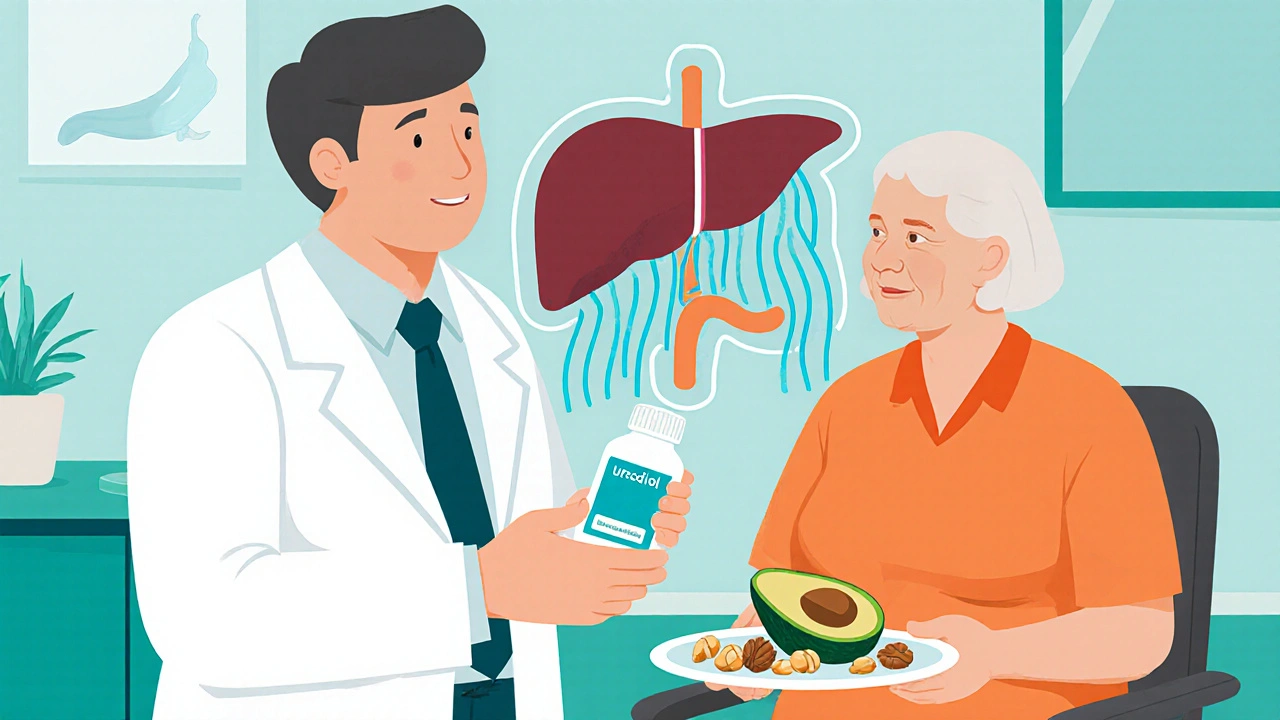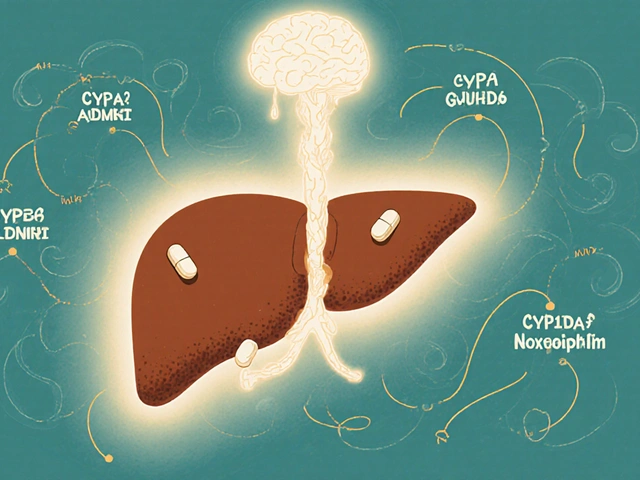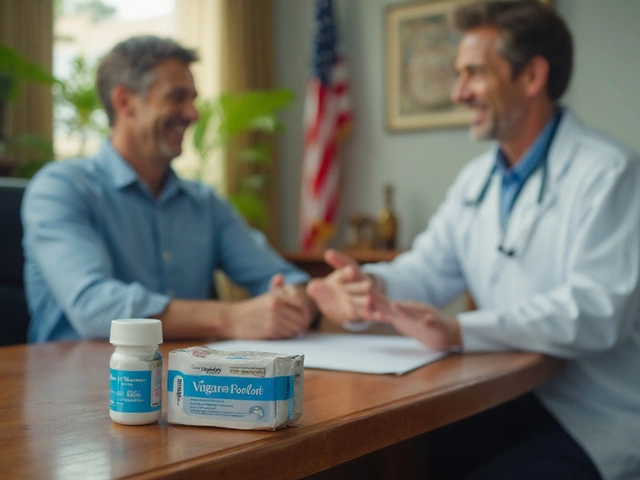
Liver Vitamin Deficiency Screening Tool
Vitamin Deficiency Assessment
Key Takeaways
- Ursodiol improves bile flow, which helps absorb fat‑soluble vitamins (A, D, E, K) in cholestatic liver disease.
- Patients with Primary Biliary Cholangitis, Primary Sclerosing Cholangitis, or cirrhosis are at high risk for specific vitamin deficiencies.
- Regular labs (e.g., serum 25‑OH‑D, PT/INR, retinol, α‑tocopherol) guide supplementation.
- Tailored supplementation (dose, form, timing) combined with diet rich in healthy fats maximizes benefits.
- Monitoring for over‑supplementation and drug‑nutrient interactions is essential for safety.
When a liver‑diseased patient starts Ursodiol, the conversation often jumps straight to liver enzymes and itching relief. But a less obvious, yet critical, piece of the puzzle is nutrition-especially the absorption of fat‑soluble vitamins. This guide walks you through why ursodiol matters for vitamin status, which deficiencies pop up most often, and how to design a practical nutrition plan that keeps patients thriving.
What is Ursodiol and How Does It Work?
Ursodiol is a hydrophilic bile acid derived from bear bile that is used therapeutically to modify the bile‑acid pool in cholestatic liver disease. By displacing more toxic, hydrophobic bile acids, ursodiol lowers intra‑hepatic cholestasis, improves bile flow, and reduces inflammation. The drug is FDA‑approved for Primary Biliary Cholangitis (PBC) and has off‑label use in Primary Sclerosing Cholangitis (PSC) and some cases of cirrhosis.
The net effect on the enterohepatic circulation is a smoother‑moving pool of bile that can better emulsify dietary fats, a prerequisite for the absorption of vitamins A, D, E, and K.
Why Fat‑Soluble Vitamins Matter in Liver Disease
Fat‑soluble vitamins are stored in the liver and carried on lipoproteins. When cholestasis limits bile secretion, the micelle formation needed for intestinal uptake falters, leading to malabsorption. Below is a quick snapshot of the four key vitamins and what deficiency looks like in a liver patient:
- Vitamin A - night‑vision problems, dry skin, and impaired immune response.
- Vitamin D - bone demineralization, muscle weakness, and higher infection risk.
- Vitamin E - oxidative stress, worsening liver fibrosis, neurological signs.
- Vitamin K - prolonged prothrombin time, easy bruising, and bleeding tendencies.
Common Liver Conditions That Trigger Deficiencies
Not all liver disease is the same, but three conditions stand out for causing vitamin shortfalls:
- Primary Biliary Cholangitis - autoimmune destruction of intra‑hepatic bile ducts leads to chronic cholestasis.
- Primary Sclerosing Cholangitis - progressive fibrosis of intra‑ and extra‑hepatic ducts, often with inflammatory bowel disease.
- Cirrhosis - end‑stage scarring that impairs bile production and storage.
Patients with any of these diagnoses who are on ursodiol will still need vigilant vitamin monitoring because the drug improves, but does not fully normalize, bile flow.

Screening: Which Labs to Order and When
Baseline and follow‑up testing should be part of every ursodiol prescription. A practical panel includes:
- Serum 25‑hydroxy‑vitamin D (25‑OH‑D) - target >30 ng/mL.
- Prothrombin time/INR - surrogate for vitamin K status.
- Serum retinol - assess vitamin A (normal 30‑80 µg/dL).
- Alpha‑tocopherol level - vitamin E (normal 5‑15 mg/L).
- Liver function tests - ALT, AST, ALP, GGT to gauge ursodiol efficacy.
Re‑check every six months for stable disease; shorten to three months if labs are out of range or if the patient’s clinical picture changes (e.g., new malabsorption symptoms, weight loss, or worsening itching).
Designing a Supplementation Strategy
The goal is to bring each vitamin into the optimal range without overshooting, which can be toxic-especially for vitamins A and D.
Vitamin D
Standard replacement starts at 1,000-2,000 IU daily, but many cholestatic patients need 2,000-5,000 IU to reach target levels. Use cholecalciferol (D3) rather than ergocalciferol (D2) because D3 has a higher affinity for hepatic 25‑hydroxylation.
Vitamin K
Because vitamin K is highly dependent on bile, oral phylloquinone may be insufficient. Consider a mixed‑micelle formulation (e.g., vitamin K2‑MK‑7 in a lipid emulsion) at 100 µg daily, and monitor INR weekly during the first month.
Vitamin A
Low‑dose retinyl palmitate (5,000 IU) is safest; avoid high‑dose preformed retinol which can cause hepatotoxicity. If dietary intake is adequate, supplementation may be unnecessary.
Vitamin E
Alpha‑tocopherol 400 IU daily can help counter oxidative stress. Choose a natural‑R‑RRR‑α‑tocopherol form for better bioavailability.
All supplements should be taken with a meal containing at least 10 g of fat (e.g., a tablespoon of olive oil, avocado, or nuts) to maximize micelle formation.
Dietary Tips to Boost Vitamin Absorption
Even with supplements, what patients eat matters. Here are three practical tweaks:
- Healthy fats first: Add a drizzle of flaxseed oil or a few olives to breakfast cereals or smoothies.
- Vitamin‑rich foods: Carrot and sweet‑potato puree for vitamin A; fortified plant milks for vitamin D; leafy greens with a splash of lemon for vitamin K.
- Avoid excessive alcohol and high‑dose over‑the‑counter multivitamins, both of which can worsen liver injury.

Case Study: Putting It All Together
Maria, a 58‑year‑old with PBC, started ursodiol 13.5 mg twice daily. Baseline labs showed 25‑OH‑D 18 ng/mL, INR 1.6, and retinol 25 µg/dL. The care team prescribed:
- Vitamin D3 4,000 IU daily with lunch.
- Vitamin K2‑MK‑7 100 µg with dinner.
- Low‑dose retinyl palmitate 5,000 IU with a morning smoothie.
- Alpha‑tocopherol 400 IU with afternoon snack.
Six months later, her 25‑OH‑D rose to 34 ng/mL, INR normalized to 1.1, and retinol reached 45 µg/dL. She reported less fatigue and no bleeding episodes. The key takeaway? Combining ursodiol with targeted nutrition closed the absorption gap.
Potential Pitfalls and How to Avoid Them
- Over‑supplementation: Vitamin A >10,000 IU/day can cause liver toxicity. Always check serum levels before increasing dose.
- Drug‑nutrient interactions: Anticoagulants (e.g., warfarin) are highly sensitive to vitamin K changes; adjust doses under physician guidance.
- Adherence issues: Simplify regimens-use combination supplements where possible and tie doses to regular meals.
- Misinterpretation of labs: In cholestasis, total vitamin D may appear low because of reduced binding protein; focus on 25‑OH‑D levels.
Quick Checklist for Clinicians
- Start ursodiol as per guideline (13-15 mg/kg/day split BID).
- Order baseline fat‑soluble vitamin panel before the first dose.
- Prescribe vitamin D3 2,000-5,000 IU, vitamin K2‑MK‑7 100 µg, low‑dose vitamin A, and vitamin E 400 IU.
- Re‑check labs at 3 months, then every 6 months.
- Educate patients on taking supplements with fatty meals.
Frequently Asked Questions
Does ursodiol cure vitamin deficiencies on its own?
No. Ursodiol improves bile flow, which helps the gut absorb fat‑soluble vitamins, but most patients still need targeted supplementation and regular monitoring.
Can I take over‑the‑counter multivitamins instead of prescribed doses?
Standard multivitamins usually contain too little vitamin D and K for cholestatic patients, and they may lack the lipid‑based formulations needed for absorption. Prescription‑grade supplements are safer and more effective.
How long does it take to see lab improvements after starting supplements?
Vitamin D levels typically rise within 8-12 weeks; vitamin K changes are seen within a few weeks via INR. Vitamin A and E may need 3-6 months to normalize.
Is it safe to give vitamin K to patients on warfarin?
Vitamin K can affect warfarin dosing. If a patient is on anticoagulation, introduce vitamin K slowly and adjust the warfarin dose under close INR monitoring.
What dietary fats work best for vitamin absorption?
Medium‑chain triglycerides (MCT oil), olive oil, avocado, and nuts provide the needed fatty acids without overwhelming the liver.
By pairing ursodiol with a thoughtful nutrition plan, clinicians can close the gap between improved bile flow and actual vitamin status, giving liver disease patients a better quality of life and a lower risk of complications.
Sebastian Green
I’ve seen patients on ursodiol struggle with vitamin D, so I always stress the importance of taking the supplement with a meal that contains at least 10 g of healthy fat. A spoonful of olive oil in a smoothie or a handful of nuts can make a big difference in absorption. Also, checking serum 25‑OH‑D every three months helps catch any shortfall before it becomes symptomatic. Encourage them to keep a simple log of their supplement times alongside their meals; the routine often sticks better that way. And remind them that consistency is key-not just the dose.
Wesley Humble
While the guide adequately enumerates the requisite laboratory panel, it neglects to address the pharmacokinetic interaction between ursodiol and high‑dose vitamin A, which can potentiate hepatic retinoid accumulation-a phenomenon documented in hepatic pharmacology literature. Consequently, clinicians should monitor serum retinol quarterly rather than semi‑annually when doses exceed 5,000 IU, to preempt hepatotoxicity. Moreover, the recommendation to use cholecalciferol over ergocalciferol, albeit valid, must be accompanied by an assessment of CYP2R1 polymorphisms in patients with refractory deficiency. Adherence to such nuanced protocols will undoubtedly optimize therapeutic outcomes 😊.
Alex Pegg
Honestly, most of the supplement doses listed are overkill for a typical cholestatic patient.
laura wood
The interplay between ursodiol-enhanced bile flow and the absorption of fat‑soluble vitamins is a cornerstone that cannot be overstated in hepatology.
Patients often report feeling better once their vitamin D and K levels normalize, which translates into fewer fractures and less bruising.
In practice, I schedule a baseline panel before the first dose of ursodiol, then repeat the tests at three and six months to capture the early kinetic changes.
When vitamin D remains below 30 ng/mL after three months, I increase the dose by 1,000 IU and reassess, because the liver's synthetic capacity can be surprisingly resilient.
For vitamin K, a lipid‑based formulation such as MK‑7 in a medium‑chain triglyceride carrier has shown superior INR correction compared with standard phylloquinone tablets.
I also advise patients to pair each supplement with at least a tablespoon of olive oil, a few slices of avocado, or a handful of walnuts to create the micelles needed for optimal uptake.
Food diaries are surprisingly effective; they reveal hidden gaps where patients skip the fatty component, leading to suboptimal vitamin levels despite perfect compliance with pills.
If a patient is on warfarin, I introduce vitamin K slowly, monitoring INR twice weekly for the first month to avoid dangerous swings in anticoagulation.
Likewise, I caution against high‑dose vitamin A above 10,000 IU, as the hepatic retinoid pool can become toxic, especially in the setting of ongoing cholestasis.
Vitamin E, administered as natural‑R‑RRR‑α‑tocopherol, can mitigate oxidative stress, but I limit it to 400 IU daily to stay within safe limits.
Educating the patient about the difference between D2 and D3, and why D3 is preferred, removes a common source of confusion.
I also stress that multivitamins sold over the counter rarely contain therapeutic amounts of these nutrients and are often not formulated for patients with impaired bile flow.
When patients adopt these strategies, I have observed a measurable reduction in fatigue scores and a noticeable improvement in skin integrity.
The key takeaway is that ursodiol provides the conduit, but the clinician must furnish the vehicle and fuel - the right fats and vitamins - to get the patient where they need to be.
Regular communication, clear written instructions, and a collaborative approach with dietitians create a sustainable plan that patients can follow long‑term.
In summary, a proactive, lab‑guided, and diet‑integrated regimen turns the theoretical benefits of ursodiol into real‑world health gains.
Natalie Morgan
Start with a vitamin D test. Adjust the dose based on the result. Recheck every three months.
Israel Emory
Indeed, establishing a baseline measurement, especially 25‑OH‑D, is essential, but one must also consider patient adherence, dietary fat intake, and potential drug‑nutrient interactions, all of which can dramatically alter the pharmacodynamics of ursodiol; therefore, I recommend coupling the lab work with a detailed nutrition counseling session, preferably within the first two weeks of therapy, to preempt any compliance issues.
barnabas jacob
From a pathophysiological standpoint, the hepatic retinoid clearance pathway is heavily modulated by CYP26A1 activity, and neglecting this enzymatic axis can precipitate iathreic hypervitaminosis A, which, as the literature evidences, may exacerbate fibrogenesis via stellate cell activation-so yeah, don’t ignore the biochem.
jessie cole
Friends, consider this a call to action: empower your patients with the knowledge that every spoonful of olive oil is a step toward brighter eyes and stronger bones. By integrating targeted vitamin D3, K2‑MK‑7, and modest amounts of vitamins A and E into a meal, you construct a fortress against malnutrition. Remember, consistency beats intensity; a daily ritual of supplements taken with breakfast or lunch is far more effective than sporadic mega‑doses. Let us champion this regimen together, and watch the transformation unfold.
Kirsten Youtsey
It is rather astonishing that mainstream hepatology textbooks continue to gloss over the subtle yet profound influence of industrially engineered lipid emulsions on vitamin K bioavailability, a detail that (if you read the unpublished dossiers) suggests a coordinated effort to keep practitioners reliant on expensive proprietary supplements. The truth, concealed behind layers of peer‑reviewed jargon, is that a modest amount of cold‑pressed avocado oil can achieve the same micellar efficiency without the corporate markup. One must therefore approach these guidelines with a healthy dose of skepticism and an eye toward independent research.






Write a comment